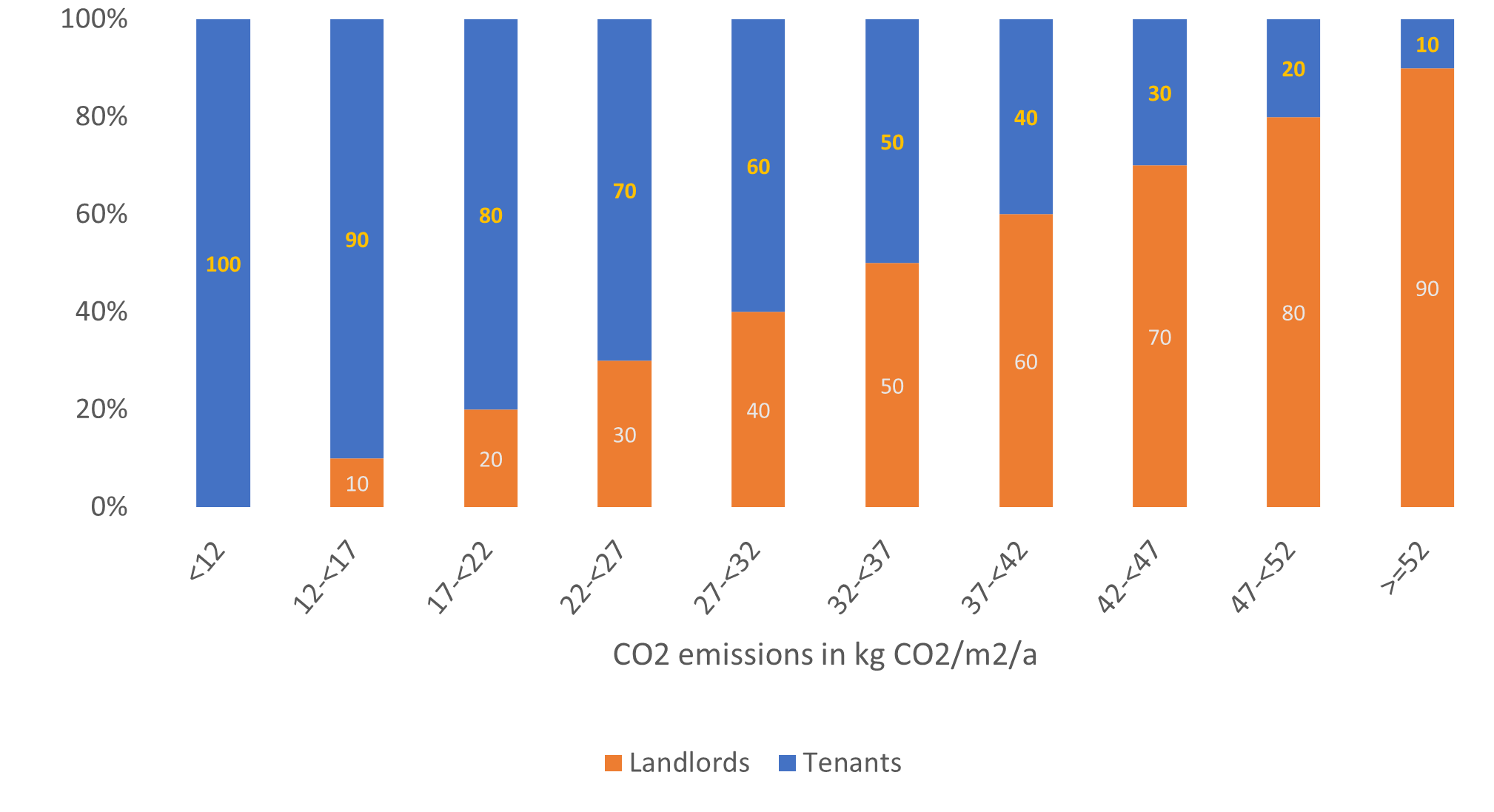
The German government plans to split the CO2 price in the building sector between landlords and tenants as of January 1, 2023. The share of the costs paid by the landlord will be higher the worse the energy performance of a building. Compared with the current model, landlords will incur CO2 costs for the first time and thus have an increased incentive to refurbish buildings to make them more energy-efficient and to replace heating systems. Nevertheless, investment barriers remain.
Tenants, on the other hand, pay a lower share of the CO2 costs under the new model. But they can only adjust their behavior, i.e., their demand for fossil fuels, to a limited extent. This is shown in the policy brief “CO2 pricing in the residential sector – short- and long-term effects for decarbonization and their social implications” by the Institute of Energy Economics (EWI) at the University of Cologne.
In the energy and industry sectors, CO2 pricing has been in place for a long time as part of European emissions trading. In line with economic theory, CO2 pricing in these sectors has led to falling emissions. In the building sector, CO2 pricing has also been in place for natural gas and heating oil since January 1, 2021. However, decarbonizing the building sector – especially residential buildings – is much more difficult due to the large number of households and the differentiation between owners and consumers, among other factors. What is new now is that CO2 costs are to be shared between tenants and landlords in the future.

“The incentive effect of CO2 pricing in the residential sector is limited in the short and long run due to low price elasticities,” says Dr. Johanna Bocklet, senior research consultant at EWI. “Even if the price of (fossil fuel) heating increases as a result of CO2 pricing, households reduce their demand for heating only to a small extent.”
The short-term price elasticity is low mainly because people have a basic need for heat energy, so there is little potential for savings. “A CO2 price in the short term should only target the part of the demand for thermal energy that exceeds the really necessary energy demand,” says Bocklet. “Social compatibility and distribution effects also play a central role.” Because a CO2 price acts like a regressive tax and lower-income households spend a larger share of their income on energy, it is these households that will be burdened more by the CO2 price.
For landlords or homeowners, the general rule is that the higher the CO2 price, the more economical it is to invest in energy-efficient refurbishment and heating system replacement. However, there are also circumstances here that can prevent a greater adjustment of the capital stock in response to price changes: Risk aversion, long investment cycles, and high discount rates often ensure in practice that necessary investments in refurbishment and heating replacements are not undertaken, even though the economic incentives exist in theory. In addition, factors like the age structure of owners, the shortage of qualified workers, and resource scarcity slow down the decarbonization of the residential building sector in practice.
To reduce heat consumption and efficiently stimulate investments in the capital stock in the residential building sector, a CO2 price alone is therefore not sufficient.